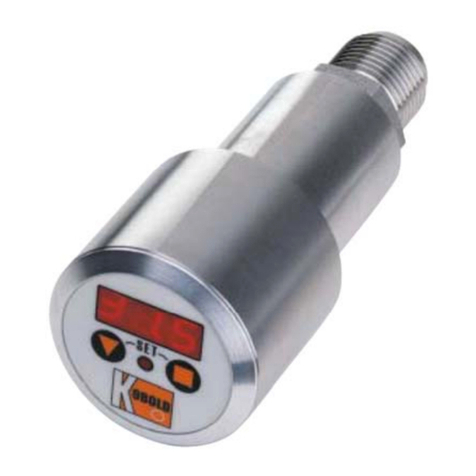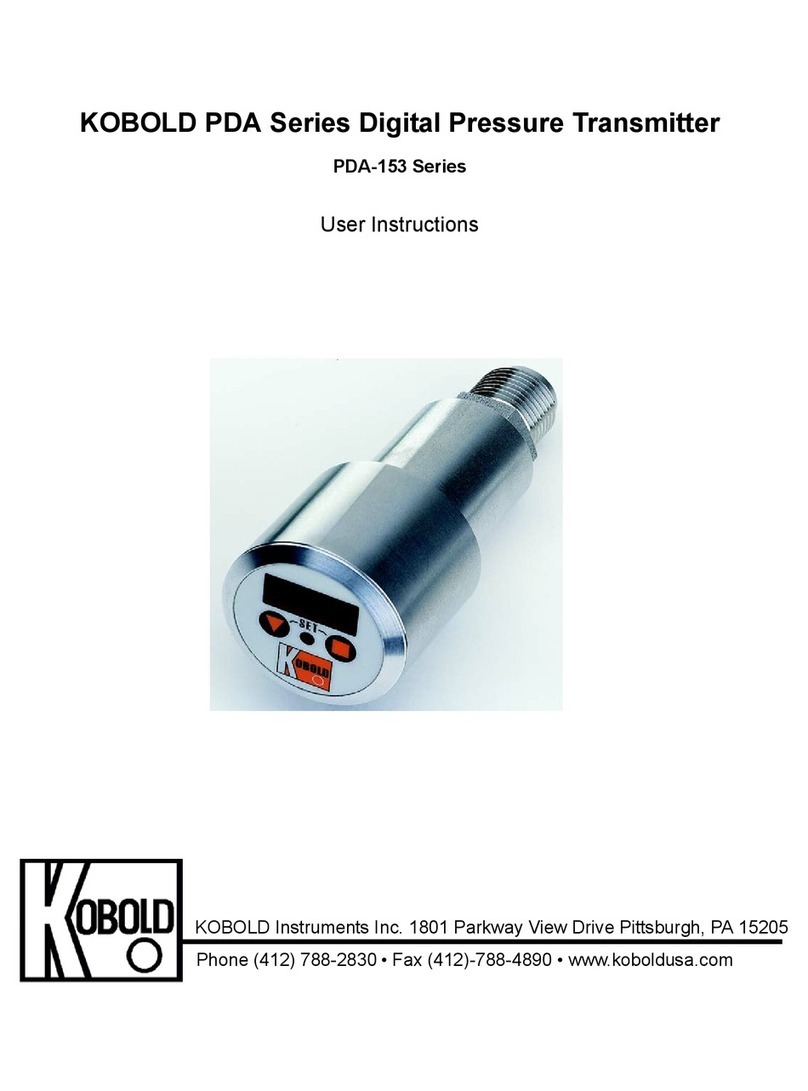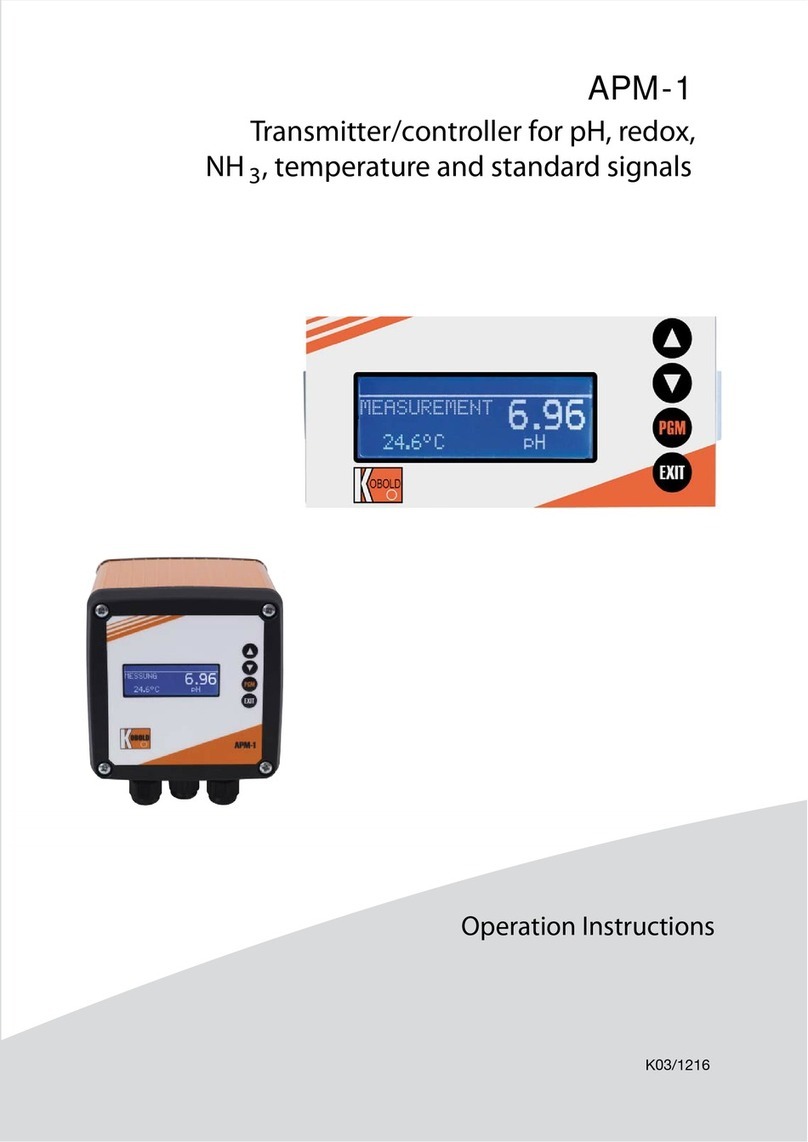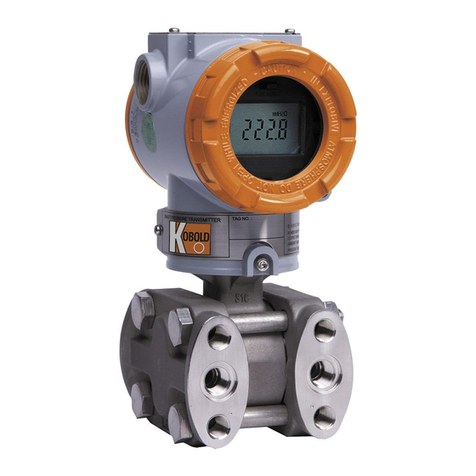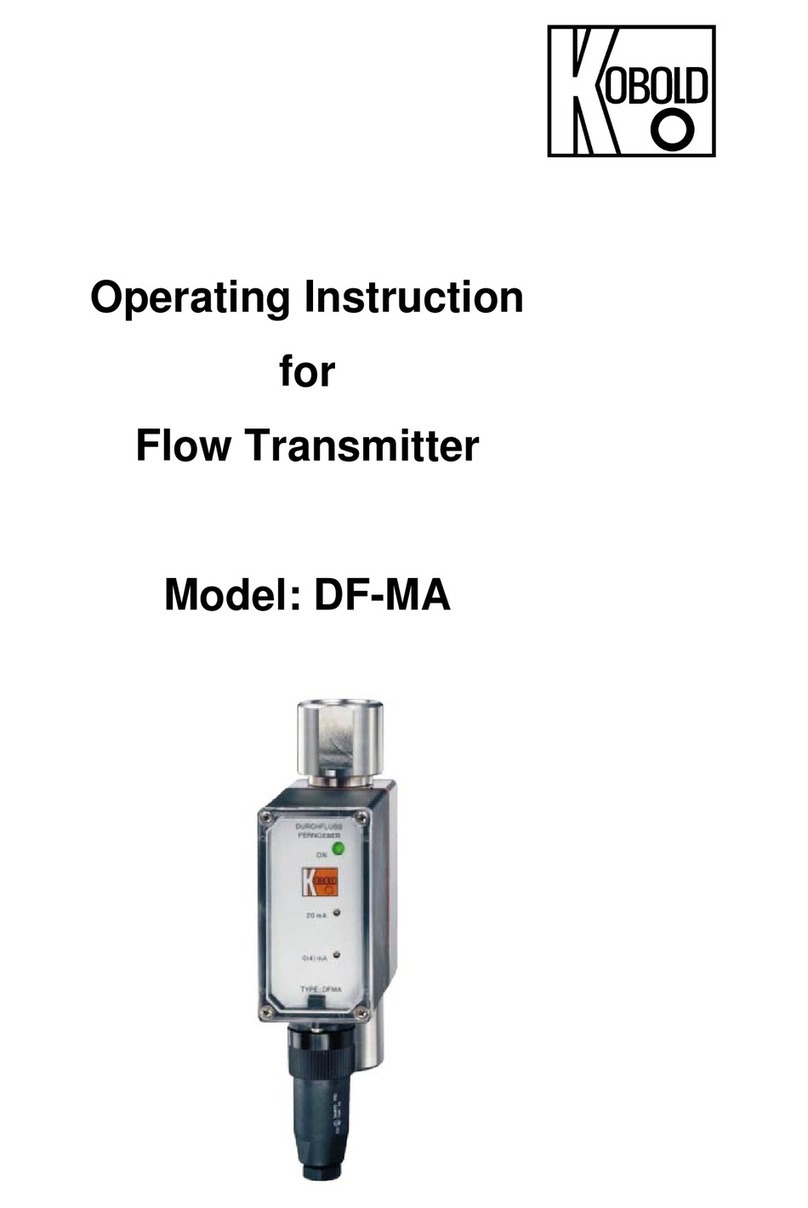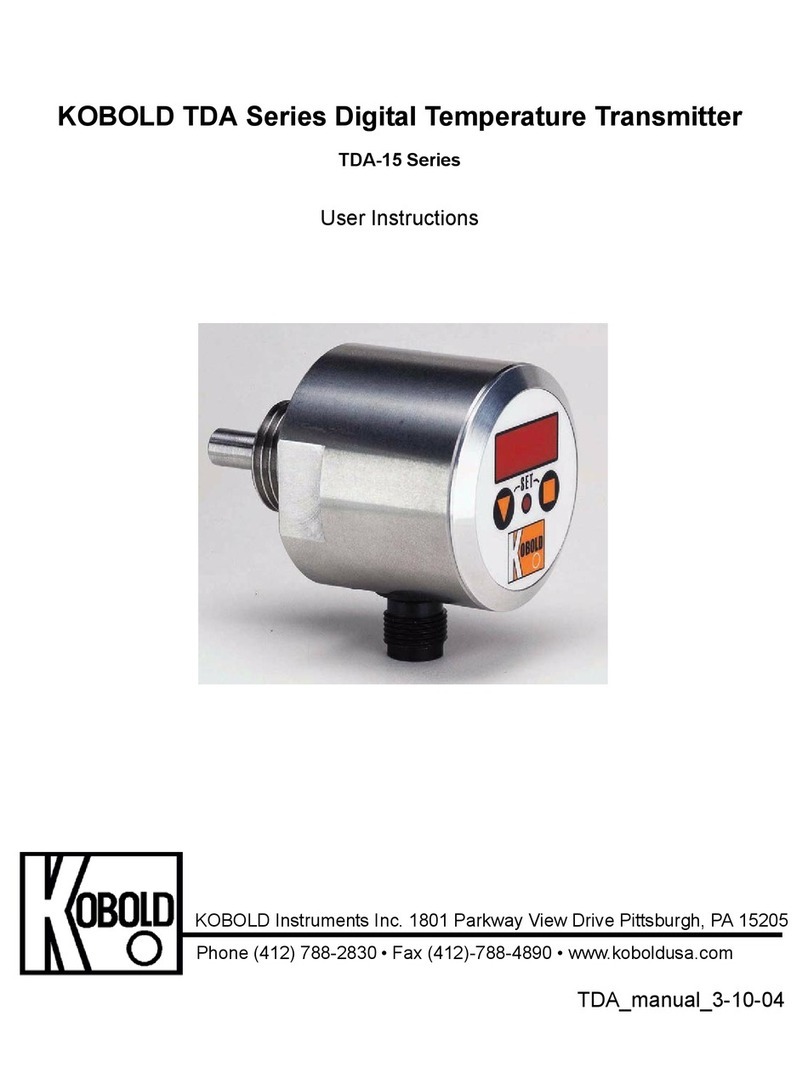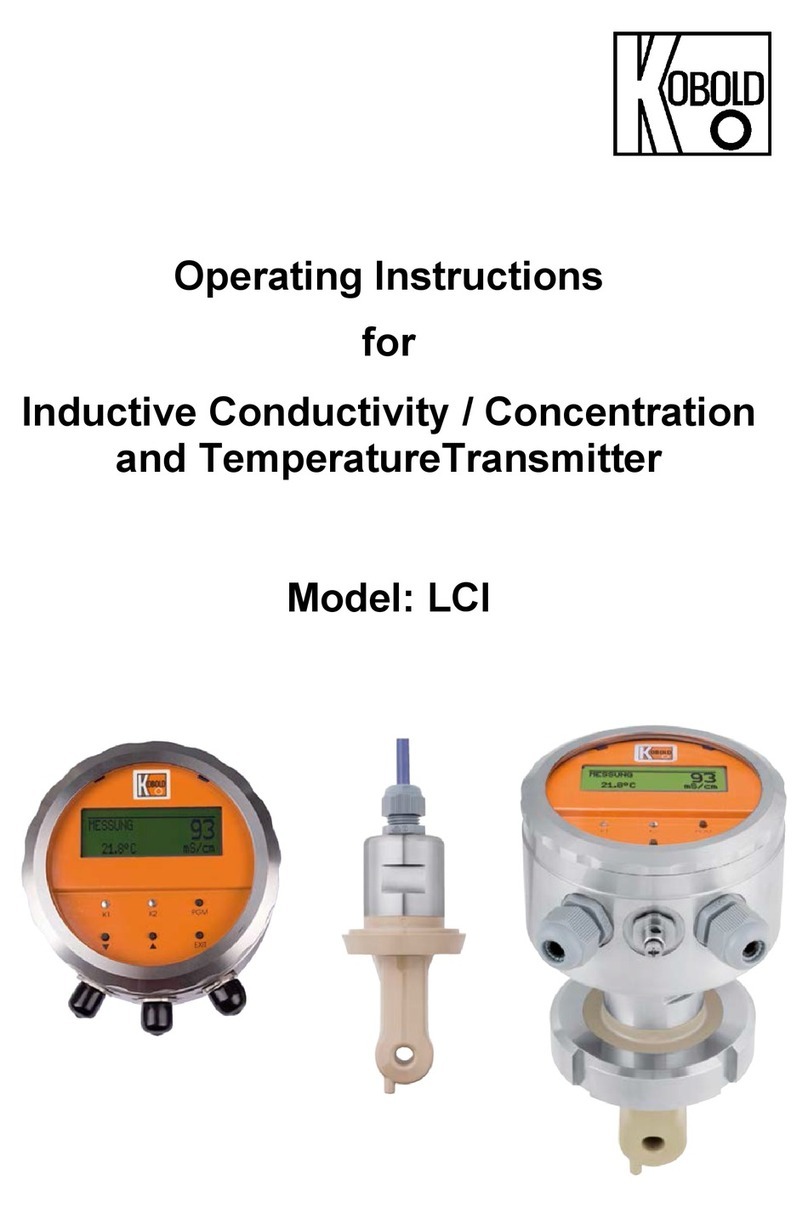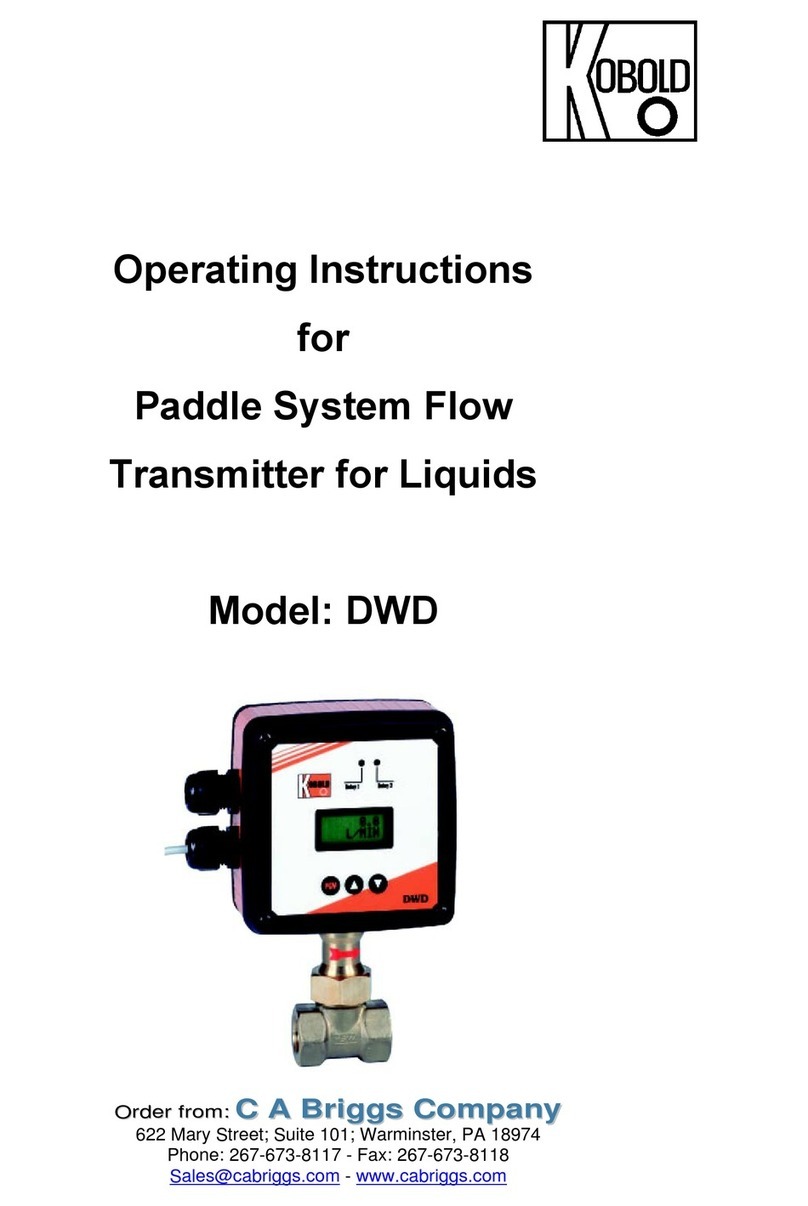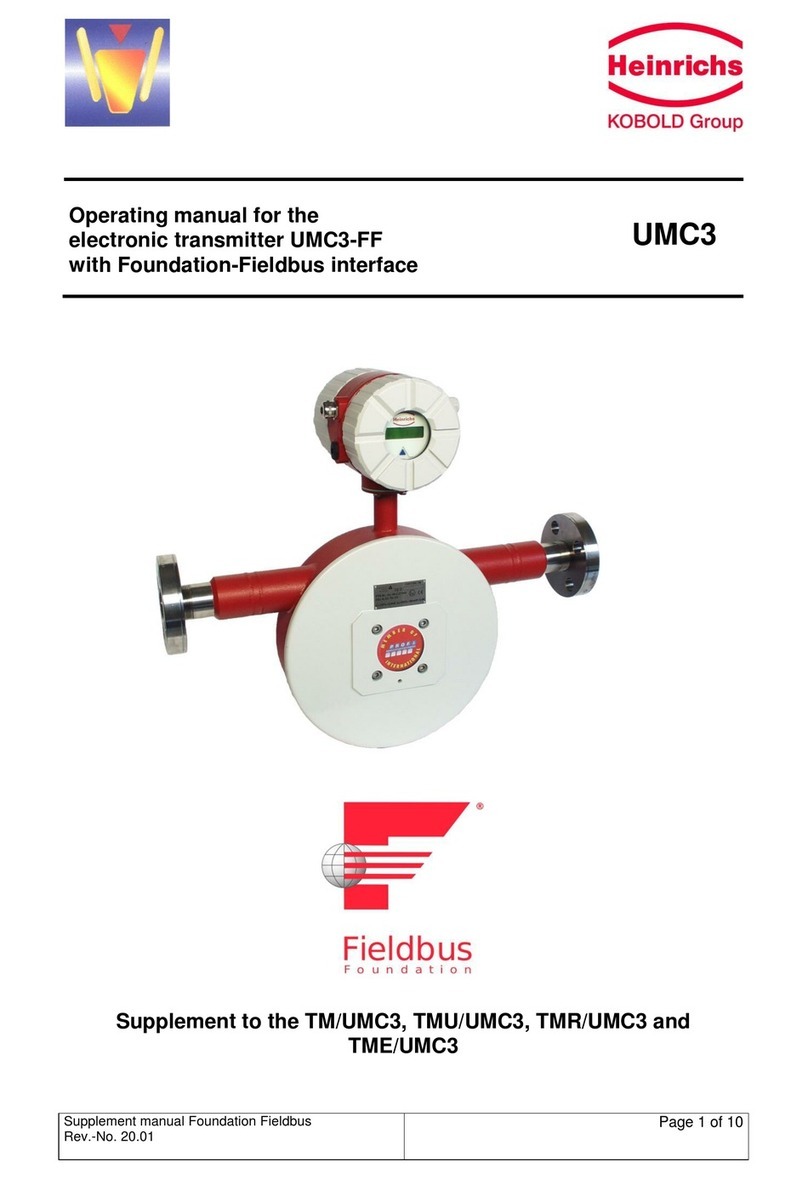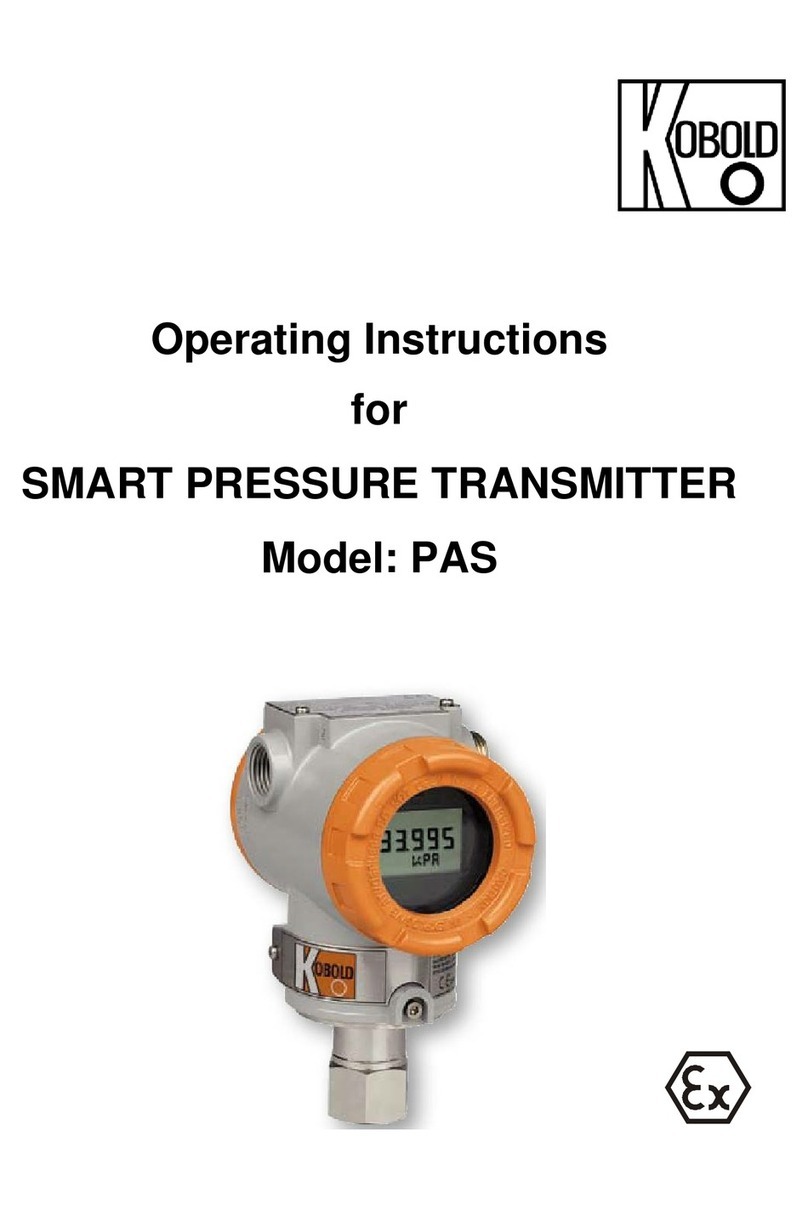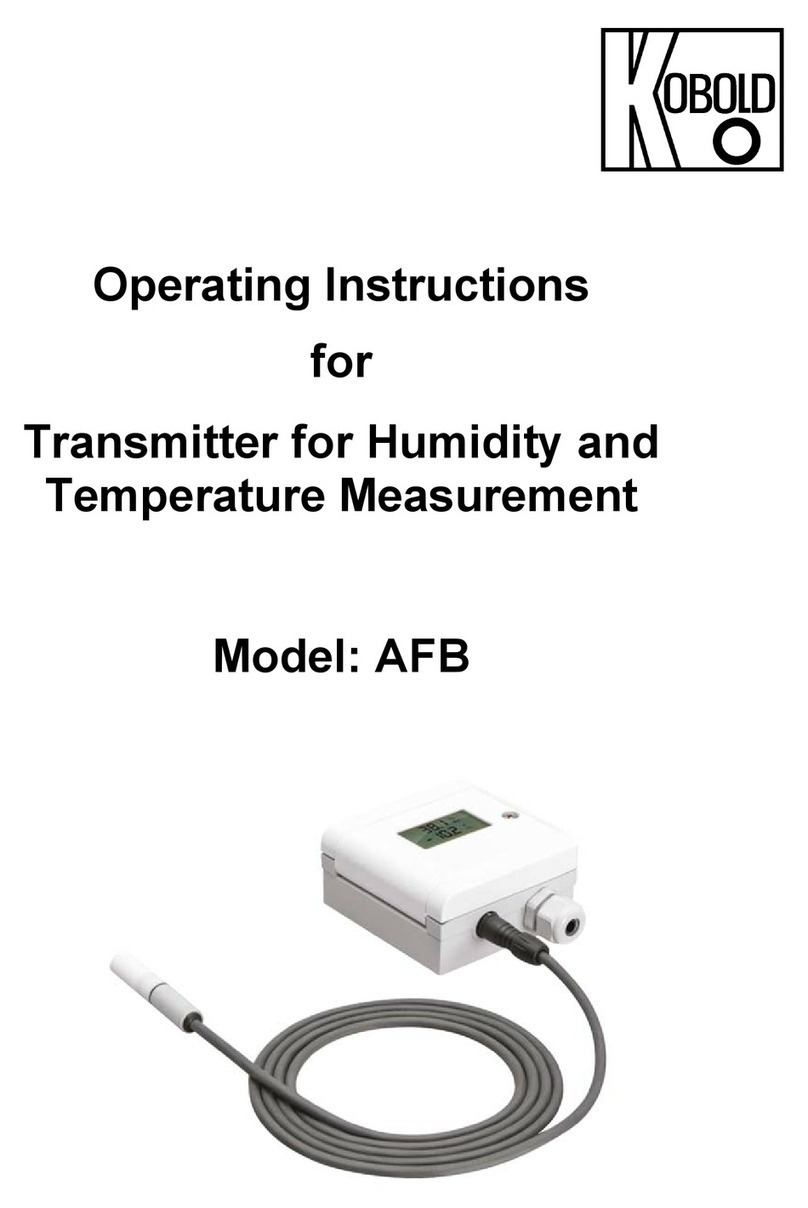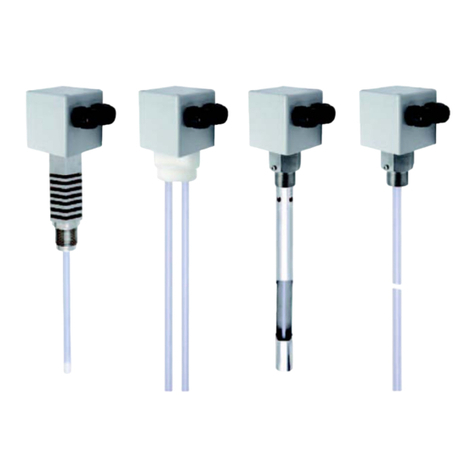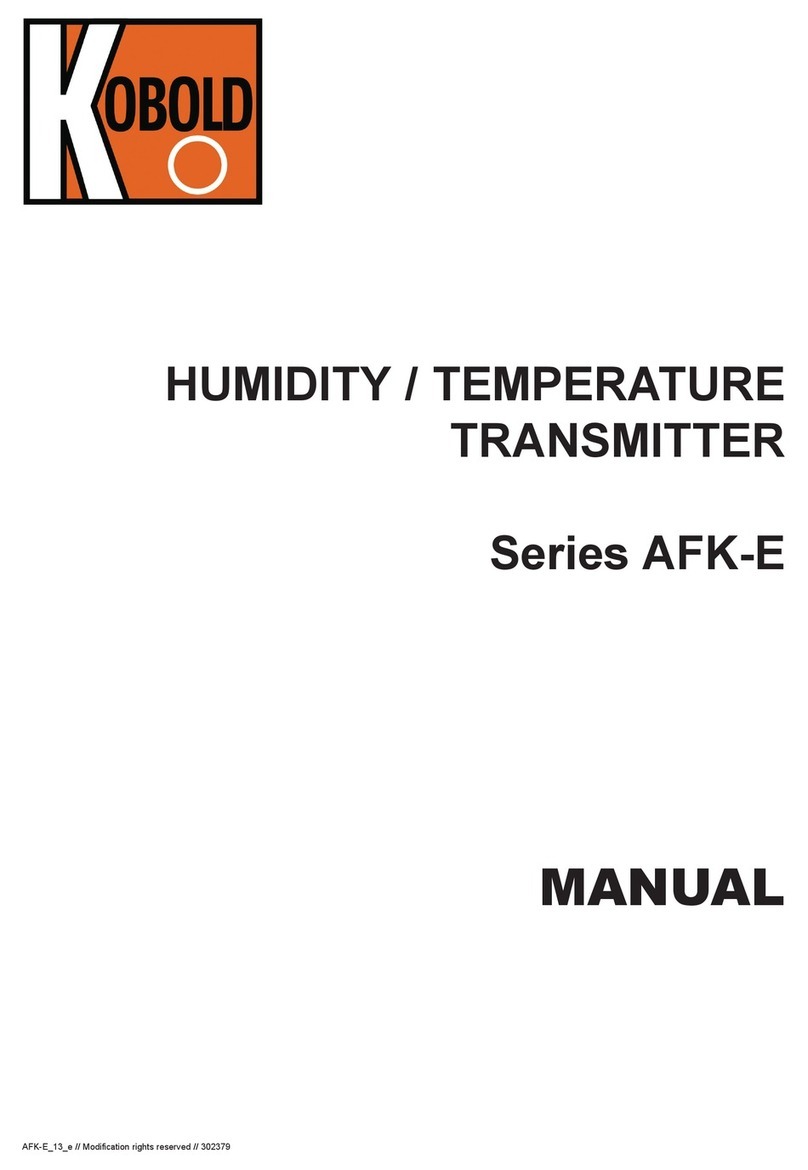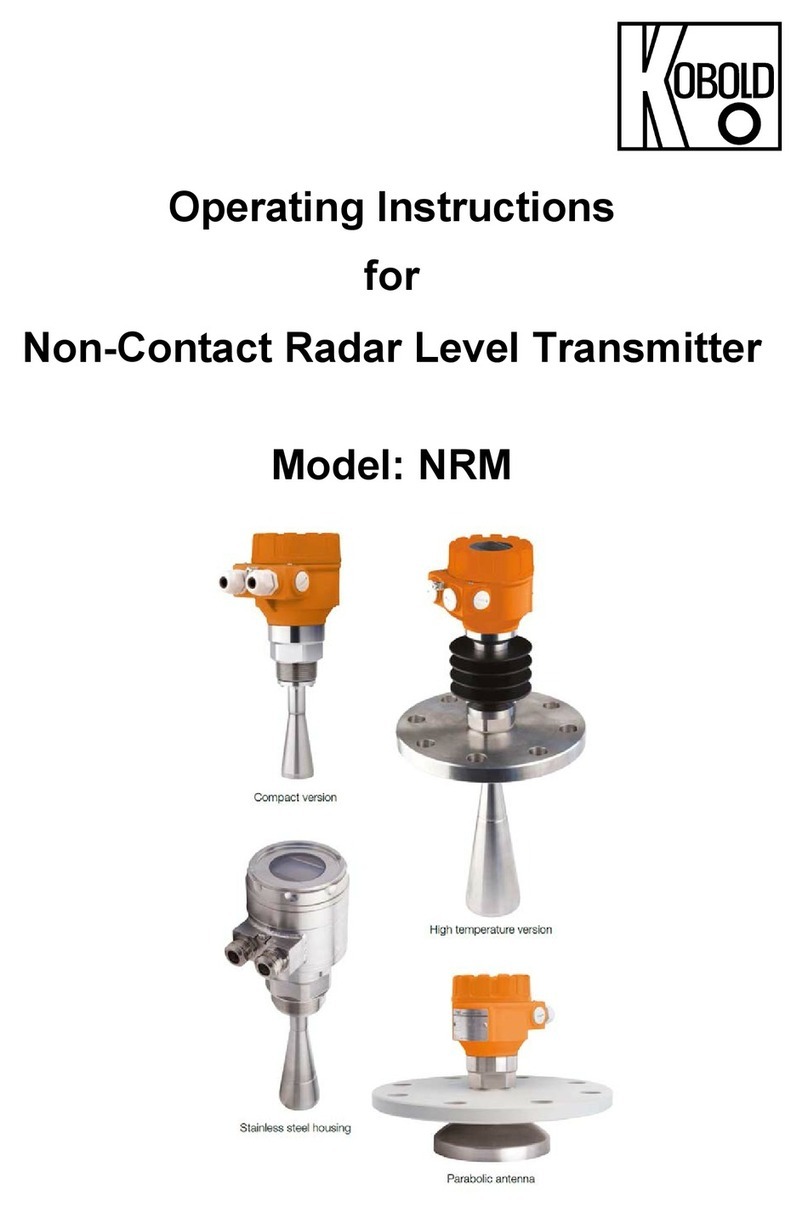
KAL-A 4
FM Rev. 8/22/06
3.0 Mechanical Installation
To install the KAL-A flow transmitter into your piping system, proceed as follows:
3.0.1 The KAL-A flow transmitter can be mounted in virtually any orientation as long
as the piping is completely filled with liquid. It is recommended that the unit be
installed in the upper hemisphere of the pipe when being used in horizontal
piping runs. This ensures that sediments do not deposit on the probe. It is also
recommended that the probe not be installed in the very top of the pipe. In low
pressure systems air bubbles which collect at the top of the pipe may keep the
liquid from contacting the probe.
Diagram 3.1Mechanical Installation
3.0.2 For optimal measuring accuracy, allow for a minimum of 5 pipe diameters of
straight-run piping both upstream and downstream of the flow transmitter. This
ensures that flow profile at the sensing probe is fully developed turbulent flow.
3.0.3 Prior to installation, ensure that the actual system flowrate is within the mea-
suring range of the KAL-A. Additionally, ensure that the maximum system tem-
perature and pressure are within the limits specified per Section 2.0,
Specifications.
3.0.4 It is recommended that a thread sealant such as PTFE sealing tape be applied
to the probe threads to ensure a leak-tight seal.
3.0.5 Using an appropriate sized wrench, carefully thread the sensor probe into the
piping system. The probe must be installed such that at a minimum, the probe
tip extends beyond the inner diameter of the piping and into the liquid stream.
If this is not the case, the unit may still function but the measuring range will be
somewhat higher than those stated in Table 2.1, Switching Ranges vs. Pipe
Diameter.
Correct
Sediments cannot
on the probe
Incorrect
Bubbles can insulate the
probe from the process liquid
collect
